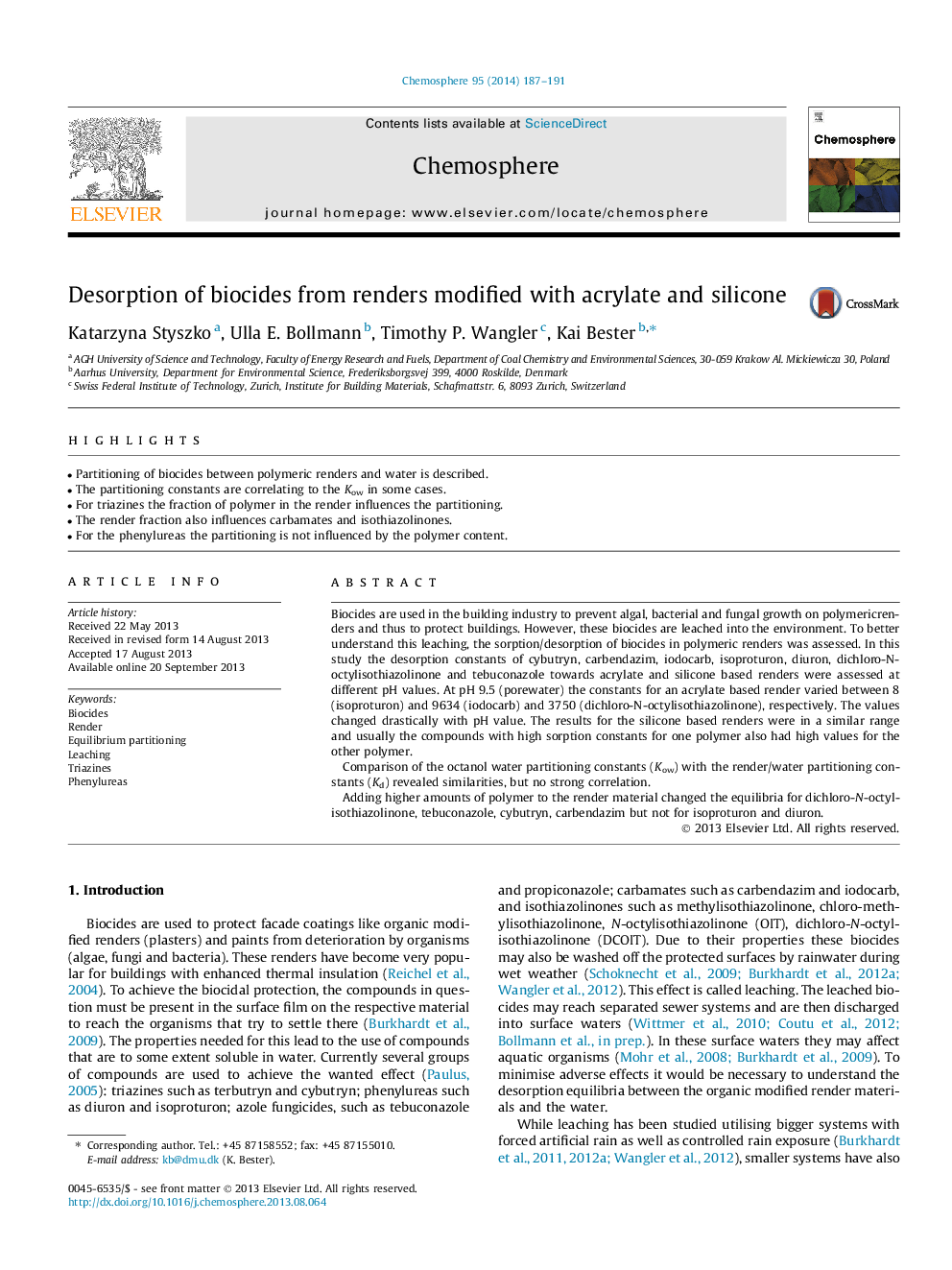| کد مقاله | کد نشریه | سال انتشار | مقاله انگلیسی | نسخه تمام متن |
|---|---|---|---|---|
| 6309764 | 1618876 | 2014 | 5 صفحه PDF | دانلود رایگان |
- Partitioning of biocides between polymeric renders and water is described.
- The partitioning constants are correlating to the Kow in some cases.
- For triazines the fraction of polymer in the render influences the partitioning.
- The render fraction also influences carbamates and isothiazolinones.
- For the phenylureas the partitioning is not influenced by the polymer content.
Biocides are used in the building industry to prevent algal, bacterial and fungal growth on polymericrenders and thus to protect buildings. However, these biocides are leached into the environment. To better understand this leaching, the sorption/desorption of biocides in polymeric renders was assessed. In this study the desorption constants of cybutryn, carbendazim, iodocarb, isoproturon, diuron, dichloro-N-octylisothiazolinone and tebuconazole towards acrylate and silicone based renders were assessed at different pH values. At pH 9.5 (porewater) the constants for an acrylate based render varied between 8 (isoproturon) and 9634 (iodocarb) and 3750 (dichloro-N-octylisothiazolinone), respectively. The values changed drastically with pH value. The results for the silicone based renders were in a similar range and usually the compounds with high sorption constants for one polymer also had high values for the other polymer.Comparison of the octanol water partitioning constants (Kow) with the render/water partitioning constants (Kd) revealed similarities, but no strong correlation.Adding higher amounts of polymer to the render material changed the equilibria for dichloro-N-octylisothiazolinone, tebuconazole, cybutryn, carbendazim but not for isoproturon and diuron.
Journal: Chemosphere - Volume 95, January 2014, Pages 188-192
